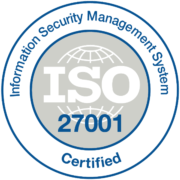The Modern CIO: Building bridges between business and customers.
Once upon a time, the CIO was an unappreciated and largely unknown hero; relegated to the back room and responsible for keeping the lights on without fanfare or recognition. Now, the role has matured to one which is central (and critical) to achieving business goals.
As well as being charged with the responsibilities that come with a seat at the boardroom table, today’s CIO is accountable for building a digital customer-first foundation that can easily evolve to meet changing demands.
How did Customer Experience (CX) become a CIO responsibility?
One of the most telling comments in Forrester’s “The CIO’s Role In The Growth Agenda” report is where they say: One CIO we spoke with told us, “It turns out, I actually own customer experience because I’m responsible for the systems that serve them.”
And with CX being increasingly reliant on technology, the choices the CIO makes now will underpin business growth. They’re important, and far-reaching.
Here’s why.
The case for exceptional CX being the norm, not the exception.
In Forbes’ article from late 2023, “Leading Digital Transformation: Why CIOs Should Keep CX Top Of Mind,” they observe that research has repeatedly shown that keeping customers happy and finding better ways to engage with them is not just crucial for survival but also key to thriving in a challenging economic climate.
Forbes also points to PwC’s Customer Loyalty Executive Survey 2023, where 87% of executives and 51% of consumers in the United States agreed that an online shopping experience can negatively impact loyalty if it’s not as easy or enjoyable as shopping in person.
What is apparent from this, is that CX is critical to growth and loyalty (and profitability) across virtually every aspect of customer interactions – from websites to apps, support to fulfilment, to personalised omnichannel communications based on previous behaviour, preferences, and purchases. And key to this, is your organisation’s ability to collect and meaningfully analyse masses of data – via technology.
Is there more to the CIO role than CX, though?
While important, CX isn’t the be-all and end-all – it’s a two-way bridge. Your technology environment needs to empower your internal stakeholders so they can derive deeper and more valuable insights into the market and make better decisions. From what to sell, when and how, and what next – impacting product development, sales, customer service, marketing, and growth strategies.
And of course, the better the technology, the more ownership and support by your tech teams.
So, circling back around to the original point of this article – today’s CIO plays a critical role in deciding and guiding the use of technology (from your systems of engagement, systems of insight, security, and infrastructure – nothing is exempt) and data.
The decisions you make should enhance how the business interacts with your customers, optimise its processes, and align your business strategies with the needs and high flying CX expectations of your customers – while bringing joy to your stakeholders.
That given, let’s look at how you can ‘make it so.’
The four key strategies to drive a customer-centric tech approach.
1. Be customer aware
Make sure your business is where and what your customers expect it to be with the ability to interact with you how they want to.
While it’s not as simplistic as building it and they will automatically come, failing to build solutions that deliver the high-quality experience your customers expect (from web to mobile apps to self-help) is a sure-fire path to failure in a digital world.
2. Stand united
Your technology model should link your tech and business teams – from marketing, to sales, CX and product, and digital – together, not drive a ‘have/have-not’ wedge between them.
In Forrester’s “The CIO’s Role In The Growth Agenda” report, they say: “In our studies, respondents at enterprises with high levels of alignment across customer-facing functions report 2.4x higher revenue growth than those with some or no alignment. Those same aligned groups benefit from working with IT teams that are 3.7 times more likely to be highly or somewhat aligned with other functions.”
Also consider what new technologies like AI (artificial intelligence) and ML (machine learning) will bring to the table as part of your drive to improve your business operations and gain a competitive advantage. While you may prefer to develop custom models that work well with your current data sets, keep an eye out for records management application vendors who are incorporating AI directly into their products.
3. Discard complexity
Stop investing in old technology. Make now the time to move on from the cost and complications inherited with legacy systems to consolidate and build better customer facing systems.
Reduce the complexity of your systems of records by ensuring you have a strong ability to retrieve data from your existing systems. This way you can be confident that you can access the data you need in the future – which is especially important if you are in a regulated industry.
For example, in the professional services sector, many organisations are switching to cloud-based records management systems to enable new Business Innovation, and as a result, are shutting down their old on-premise systems. Global Storage customers in this sector trust that their legacy data is secure and recoverable through our range of cloud services, which allows them to move forward and free up old capital and resources.
4. Invest in result
While it’s tempting to adopt one shiny, exciting new solution after another, step back and reconsider. The most important thing about technology is the result, not the way to achieve it.
Keeping this in mind will help you focus on what matters most to the business. For example, Global Storage offers an outcome-based service with strict SLAs that allows our customers to concentrate on innovation within the business. This saves them from getting bogged down in the essential but routine operational tasks and the effort and expense of keeping up with new technology and systems that ultimately add little value to the business.
In summary, building great bridges requires strong foundations – ones that are deep and true to support the weight of change and significant business growth.
Above all, the foundations you lay as CIO should enable fast and complete business recovery following a natural or maliciously contrived disaster.
Contact us to have an obligation-free chat.



